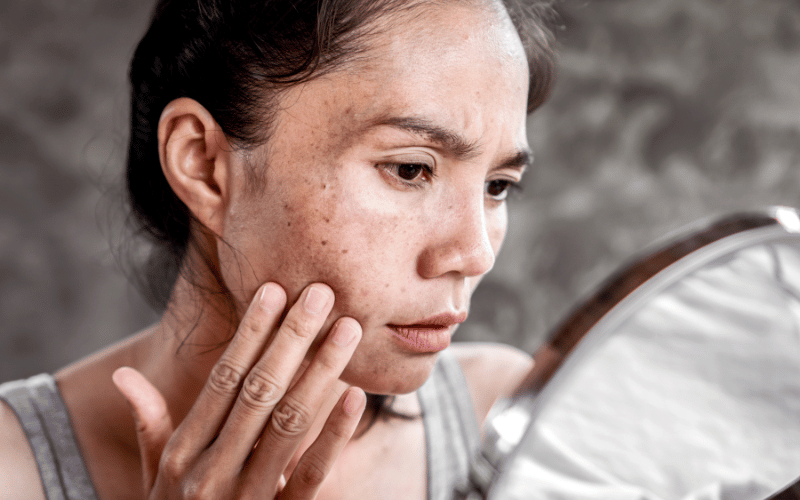9. Skin Lesions: More Than Just a Cosmetic Concern

Skin lesions associated with Kaposi’s Sarcoma often begin as small patches that may be mistaken for bruises or other minor skin conditions. These patches are usually dark, appearing in hues of purple, red, or brown, and can be flat or slightly raised.
While they may not cause immediate discomfort or pain, their presence should not be dismissed. At first glance, you might attribute these skin changes to aging, sun exposure, or other non-threatening factors. However, it’s essential to distinguish these lesions from other skin conditions for timely intervention.
When these patches appear on the skin, it typically signifies the onset of Kaposi’s Sarcoma, particularly in individuals with compromised immune systems. The appearance of lesions is often one of the first symptoms that lead people to seek medical consultation.
The reason why these skin lesions are concerning lies in their association with the endothelial cells that line blood vessels. Kaposi’s Sarcoma arises from these cells, affecting both the superficial and deeper layers of the skin. The lesions can also appear on mucous membranes and other internal organs, highlighting the systemic nature of this malignancy.
Over time, these skin patches can grow in size, merge together, and form plaques or nodules. Advanced stages can manifest as open sores or ulcers, leading to secondary bacterial infections.
Neglecting these symptoms allows the cancer to progress, potentially reaching internal organs and other systems in the body. In some cases, skin lesions may also produce lymphedema, a painful swelling due to fluid retention, usually in the arms or legs. This progression can drastically affect an individual’s quality of life and significantly complicate treatment strategies. (9)